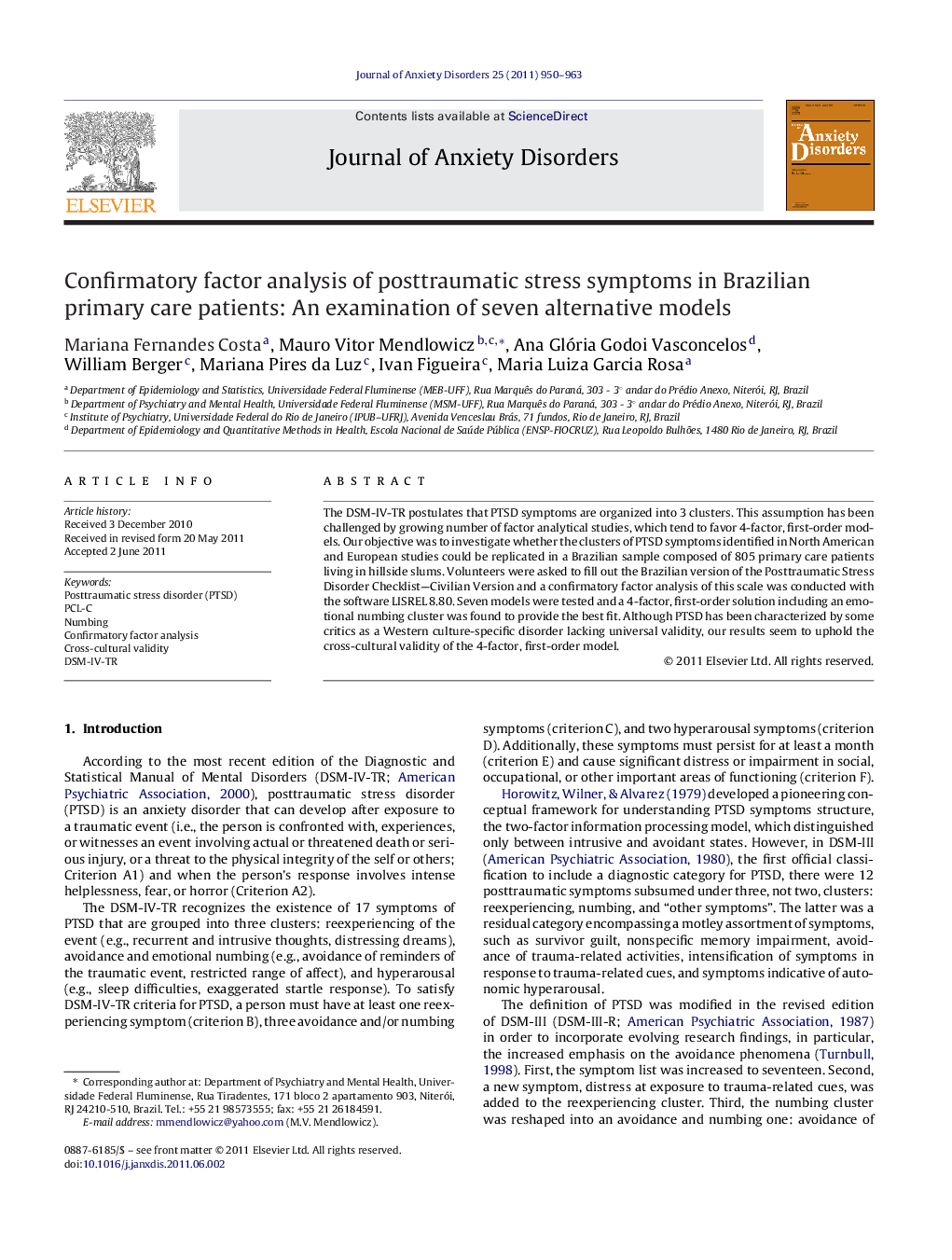| کد مقاله | کد نشریه | سال انتشار | مقاله انگلیسی | نسخه تمام متن |
|---|---|---|---|---|
| 909615 | 917297 | 2011 | 14 صفحه PDF | دانلود رایگان |

The DSM-IV-TR postulates that PTSD symptoms are organized into 3 clusters. This assumption has been challenged by growing number of factor analytical studies, which tend to favor 4-factor, first-order models. Our objective was to investigate whether the clusters of PTSD symptoms identified in North American and European studies could be replicated in a Brazilian sample composed of 805 primary care patients living in hillside slums. Volunteers were asked to fill out the Brazilian version of the Posttraumatic Stress Disorder Checklist—Civilian Version and a confirmatory factor analysis of this scale was conducted with the software LISREL 8.80. Seven models were tested and a 4-factor, first-order solution including an emotional numbing cluster was found to provide the best fit. Although PTSD has been characterized by some critics as a Western culture-specific disorder lacking universal validity, our results seem to uphold the cross-cultural validity of the 4-factor, first-order model.
► The DSM-IV-TR postulates that PTSD symptoms are organized into 3 clusters.
► However, recent factor analytical studies tend to favor 4-factor, first-order models.
► 805 Brazilian primary care patients filled out the PCL-C and a CFA was conducted.
► A 4-factor, first-order solution including a numbing cluster provided the best fit.
► The results uphold the cross-cultural validity of the 4-factor, first-order model.
Journal: Journal of Anxiety Disorders - Volume 25, Issue 7, October 2011, Pages 950–963